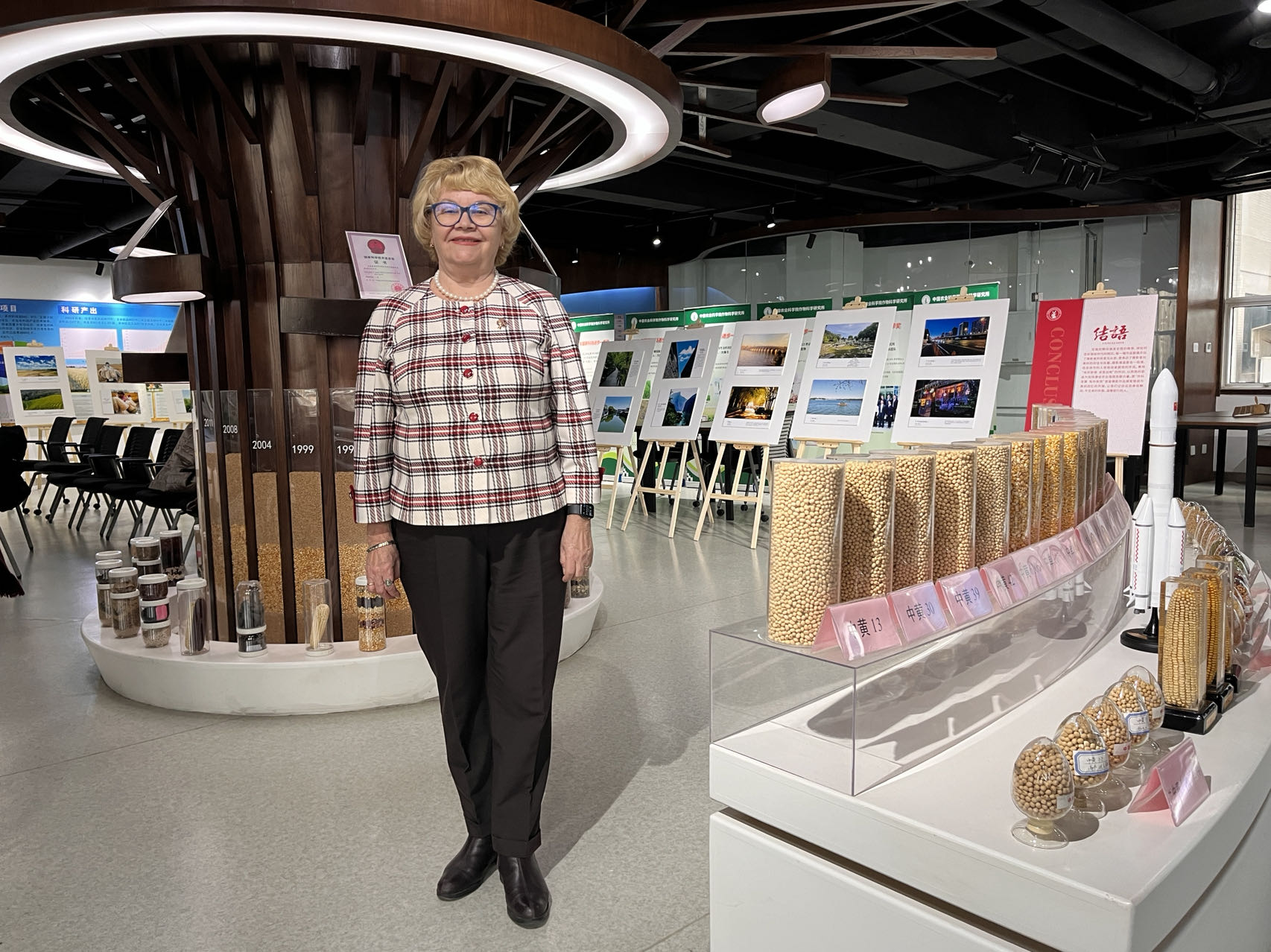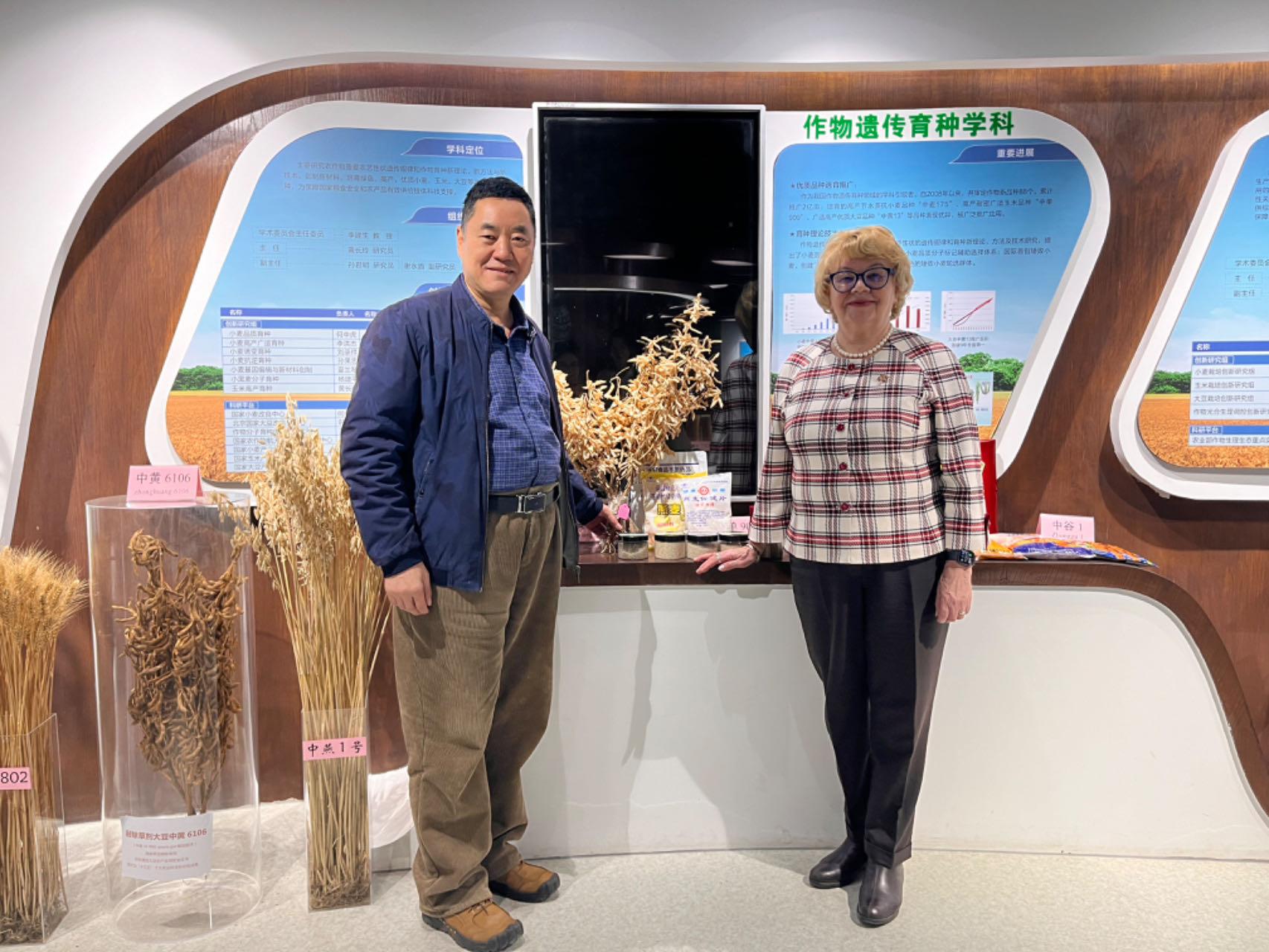Soybean Expert Hails Sino-Russian Teamwork
By LONG Yun, LI Liyun & BI Weizi

Professor Valentina Sinegovskaia. (PHOTO: S&T Daily)
On February 4, Russian expert Valentina Sinegovskaia was honored with the Chinese Government Friendship Award in recognition of her significant contribution to advancing Sino-Russian sci-tech cooperation in the field of soybean.
"This award is not only a personal honor but a tribute to the collective effort of my team and colleagues from China," Sinegovskaia said in a recent interview with Science and Technology Daily.
A ‘towering tree’
Currently, Sinegovskaia is the leading researcher at the plant physiology laboratory of the All-Russia Scientific Research Institute of Soybeans (ARSRIS). Her research mainly focuses on photosynthesis physiology.
Sinegovskaia’s research and teaching career spans more than four decades without ever slowing down. Influenced by her mentor, she said she finds great joy in teaching. students, saying, "When I see how satisfied the students are when they learn something new, I feel all my hard work is worth it.”
Her research enthusiasm was infectious as she talked about the untapped potential within photosynthesis physiology. Moreover, her work has taken this interest to a new level, especially regarding its impact on soybean yield.
Photosynthesis, the process by which a plant absorbs light energy and synthesizes carbon dioxide and water into organic compounds, has long been a subject of study. According to Sinegovskaia, photosynthesis physiology not only contributes to agricultural development but also propels other scientific disciplines forward.
"We have not fully unraveled the mysteries of photosynthesis. There is more to explore, more to understand. By doing so, we can drive agricultural development and even promote food security," she said.
In her perspective, all scientific endeavors are a process of self-improvement and discovery. The Russian scientist likens herself to a towering tree. "Over time, I've grown, and provided shelter and support to more students and team members, also contributing to my country's progress. I believe that every bit of effort I make is meaningful," she said.
Her message is clear: in the interconnected world of scientific research, collaboration between teacher and student, different disciplines and countries is not just beneficial but essential.

Professor Valentina Sinegovskaia (Right) and Professor HAN Tianfu. (PHOTO: S&T Daily)
Sino-Russian cooperation
Since 1989, Sinegovskaia has been promoting sci-tech cooperation between China and Russia.
She has played a pivotal role in establishing and nurturing a partnership between the ARSRIS and the branch of the Heilongjiang Academy of Agricultural Sciences in Haihe, a city in Heilongjiang. Their collaboration has led to the joint development of several soybean varieties, showcasing the power of international teamwork in advancing agricultural practices and outcomes.
In 2018, on behalf of ARSRIS, she signed a memorandum of understanding with the Institute of Crop Sciences at the Chinese Academy of Agricultural Sciences (ICS-CAAS), laying the groundwork for further cooperation in areas such as breeding early-maturing soybean varieties, identifying the growth periods of Russian soybean varieties, and exchanging molecular breeding techniques.
The way ahead
Her insight on China is constantly evolving 35 years on. Based on her firsthand observations, She has seen firsthand China’s progress in various spheres, particularly in science and technology. In her perspective, China’s endogenous strength has not only driven its dynamic advancement but also reshaped how the world views and engages with it.
Currently, Sinegovskaia is recruited as an academic advisor at the Heihe Soybean Research Center of CAAS. According to Sinegovskaia, both sides could join hands to combine the study of photosynthesis with other disciplines, which may lead to new varieties and methods to grow soybeans and enhance production.
Her recent insights into China's genetic research on soybeans have been particularly enlightening. “Our comparative studies of soybean seeds from China, the U.S. and Canada have consistently shown that Chinese varieties produce the highest yield,” she said.
Sinegovskaia sees a bright future for Sino-Russian cooperation and hopes for scientific breakthroughs based on fundamental research. Professor Han Tianfu from ICS-CAAS added that Sino-Russian future cooperation has immense potential. Sharing knowledge and information across borders exemplifies the thinking that science knows no boundaries, she added.
YUAN Shan from ICS-CAAS also contributed to this article.







